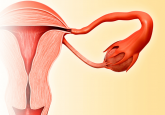Neighbors that sting: the mutation allowing highveld mole-rats to live in challenging conditions
A newly identified genetic mutation increases highveld mole-rats’ pain resistance allowing them to live with venomous ants in an environment most other rodent species could not inhabit.
For a decade, naked mole-rats have fascinated scientists due to their many forms of pain resistance. New research has revealed a genetic mutation, specific to highveld mole-rats, that allows them to live alongside venomous ants with painful stings.
Gary Lewin, study researcher and leader of the Molecular Physiology of Somatic Sensation group at the Max Delbrück Center (Berlin, Germany), stated that: “The insights…should help, among other things, in the development of new pain-relieving drugs,”.
In the study, researchers assessed the responses of naked mole-rats, and eight related rodent species, to the following three mildly noxious stimuli: dilute hydrochloric acid, capsaicin and allyl isothiocyanate (AITC; the spicy ingredient in wasabi).
“AITC and many other irritants found in roots – one of the mole-rat’s main food sources – activate TRPA1…but the ‘wasabi channel’ is the only one to be completely switched off in the highveld mole-rat,”.
In their report, published in Science, researchers noted that three of the mole-rat species displayed pain insensitivity towards diluted hydrochloric acid. Two mole-rat species were insensitive to capsaicin injection into their paws.
The highveld mole-rat was exclusively insensitive to AITC application.
Lewin commented: “This was a thrilling finding…AITC attacks amino acids in the body and can thus destroy proteins. That is why all the other species we know avoid coming into contact with the substance.”
To decipher the molecular mechanisms behind the highveld mole-rat’s unique insensitivity to AITC, the team removed sensory tissue from the spinal cords and dorsal root ganglia of all nine rodent species. State-of-the-art sequencing technology was employed to compare the expression of almost 7000 genes in the extracted tissues.
The activity of the genes encoding the TRPA1 and NaV1.7 proteins were found to be altered in highveld mole-rats, compared to the other rodent species. These proteins are known to be important in pain transmission.
Lewin explained: “AITC and many other irritants found in roots – one of the mole-rat’s main food sources – activate TRPA1…but the ‘wasabi channel’ is the only one to be completely switched off in the highveld mole-rat,”.
The team discovered that overexpression of the NALCN ‘leak channel’ protein, was responsible for this. NALCN channel expression was the only significantly altered channel expression observed in highveld mole-rats compared to all other mole-rat species studied.
Further, pharmacological blockade of the NALCN channel caused the highveld mole-rat to become temporarily sensitive to AITC.
Lewin stated that this confirmed that: “From the thousands of genes we were looking at, we had obviously found the very gene responsible for the highveld mole-rat’s remarkable pain resistance,”.
Highveld mole-rats often live in burrows with Myrmicaria natalensis – commonly referred to as Natal droptail ants — that are known for, as Lewin noted, their “…aggressive nature and highly pungent venom,”.
Eight of the rodent species displayed sensitivity towards injection of Natal droptail venom. The highveld mole-rat, however, was insensitive to the venom.
Blockade of the NALCN channel in highveld mole-rats was able to induce sensitivity towards the ant venom.
Lewin summarizes: “throughout the course of evolution, the highveld mole-rat has clearly acquired a highly active gene for a single ion channel, which has allowed it to make its home in places that are avoided by other species of mole-rat.”
Practically, Lewin commented that “…this discovery could well lead to the development of highly effective analgesics,” as the data demonstrate that “…high expression of the NALCN channel seems to be a very effective way of alleviating pain.”





